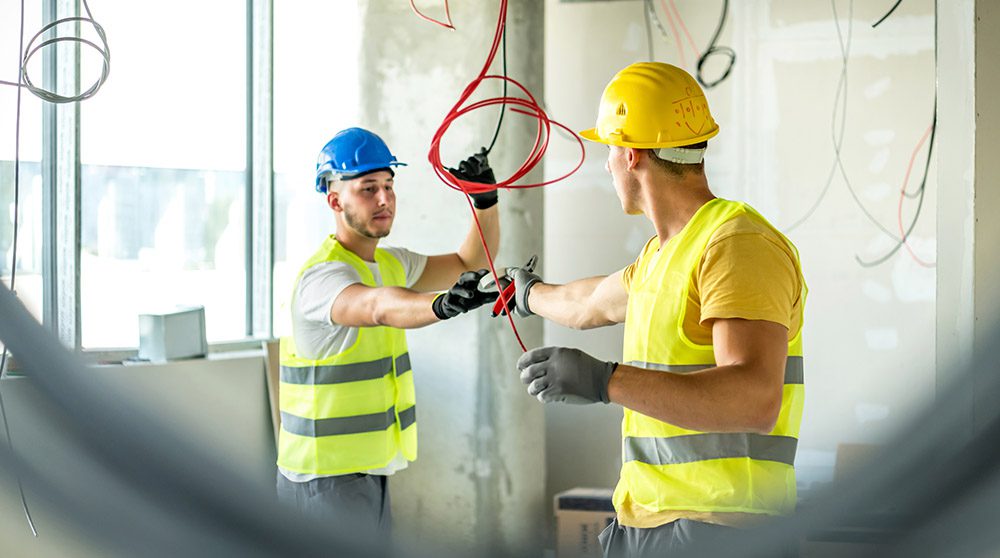Avoiding OSHA’s Fatal Four: 7 tips to prevent electrocution on the jobsite.

Construction is a rewarding business, but it can also be a dangerous business if your project, equipment, and crew aren’t primed for safety. To help reduce the risk of accidents, injuries, and fatalities on the jobsite, the Occupational Safety and Health Administration (OSHA) identified the top construction hazards, named the Fatal Four. This post tackles another one of the Fatal Four risks in construction: electrocution. Wondering how to prevent electrocution at work and put safety first? Follow these seven tips.
Use the right equipment. Double-insulated tools are designed for environments with a high risk of electric shock. These safer tools have a layer of electricity-resistant material (like rubber or plastic) along with a layer of conductive material (like metal). The combination adds a layer of protection between live wires and the operators. To combat the risk of electrocution, OSHA also upholds ground-fault circuit-interrupter (GFCI) standards. GFCI devices compare the amount of current going into electrical equipment to the amount of electrical current returning. If a safety limit is exceeded, the device helps break the circuit in a matter of milliseconds to reduce the risk of electric shock.
Know the location of nearby power lines. Before breaking ground on a project, learn where both the overhead and underground power lines are located. If there are power lines near your project, work with the local utility company to de-energize hazardous lines as possible. If this is not possible, work with nonconductive tools to help keep your crew safe.
Inspect tools before use. Equipment wear and tear is natural. But it can become dangerous if you don’t look at items prior to using them. Always check things like power cords for exposed, frayed, or damaged sections. Encourage your team to make a habit of proactively inspecting equipment. If you spot signs of wear and tear, do not plug the equipment in for use as it can lead to serious injury or death.
Use personal protective equipment (PPE). Add another layer of protection for your team with PPE. Shock-resistant gear like rubber gloves and insulated clothing can decrease the risk of electric shock. Ensure PPE matches the level of voltage your crew is working with and encourage team members to inspect their PPE before use, just as they do with equipment.
Add lockout/tagout procedures. Lockout/tagout protocol protects your crew from the release of hazardous energy from energy sources like electrical, mechanical, hydraulic, pneumatic, chemical, thermal, and other sources in machines and equipment. OSHA’s lockout/tagout protocol helps team members disable machinery or equipment to stop any hazardous energy release.
Train, train, train. Safety training is always important, but it can be lifesaving during dangerous tasks like working with electricity. Whenever new team members join (and before they get to work), conduct extensive safety training/demonstrations. Take safety one step further by hosting annual or semi-annual refresher courses for your entire crew and by conducting first aid/CPR training. Everyone can benefit from safety reminders, especially when they can save someone’s life.
Watch the weather. Because severe weather and electrical equipment don’t mix, implement protocol for when the forecast takes a turn for the worse. Consider padding project timelines to account for weather delays and ensure your crew knows what to do when inclement weather rolls in.
Now that you know how to prevent electrocution on the jobsite, learn how you can protect your crew from another one of OSHA’s Fatal Four risks: falls. Learn six fall prevention tips for contractors, then talk to one of our local, independent agents to get complete protection through any construction project.





